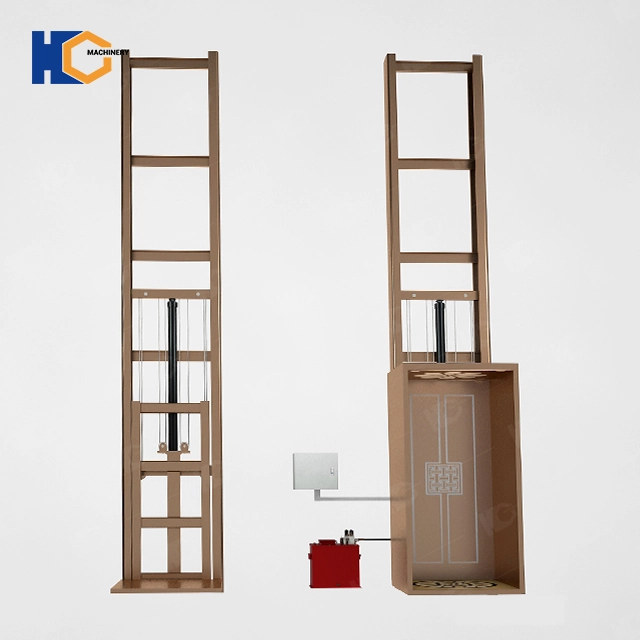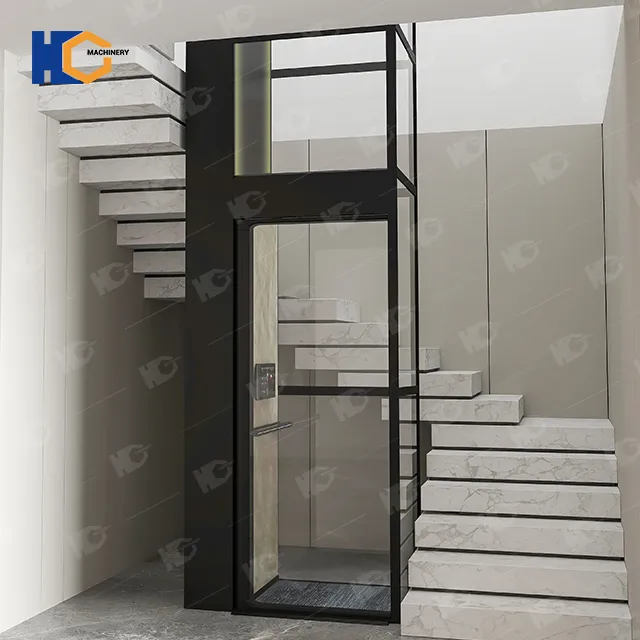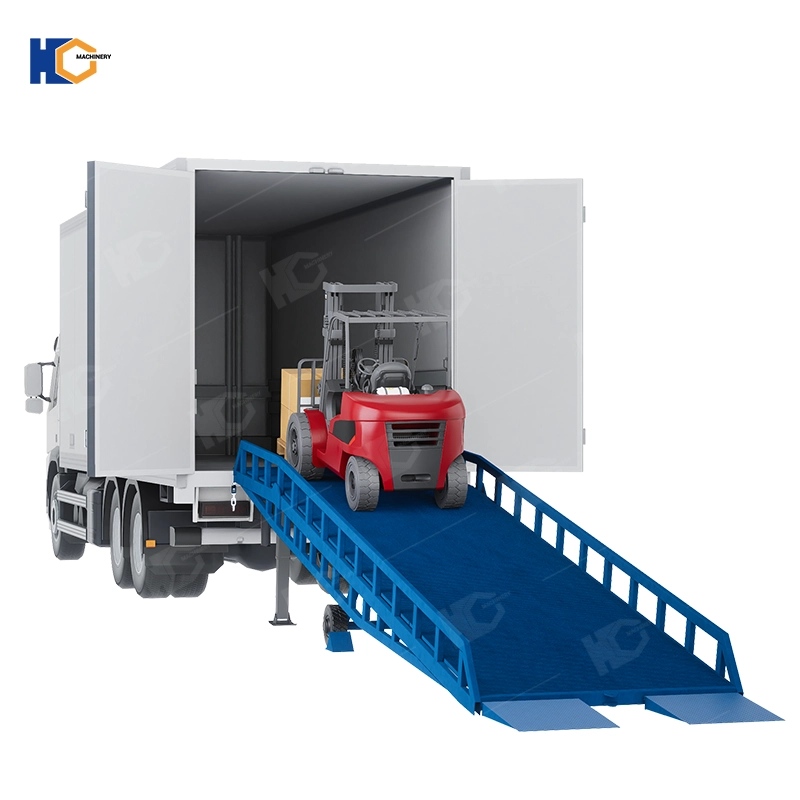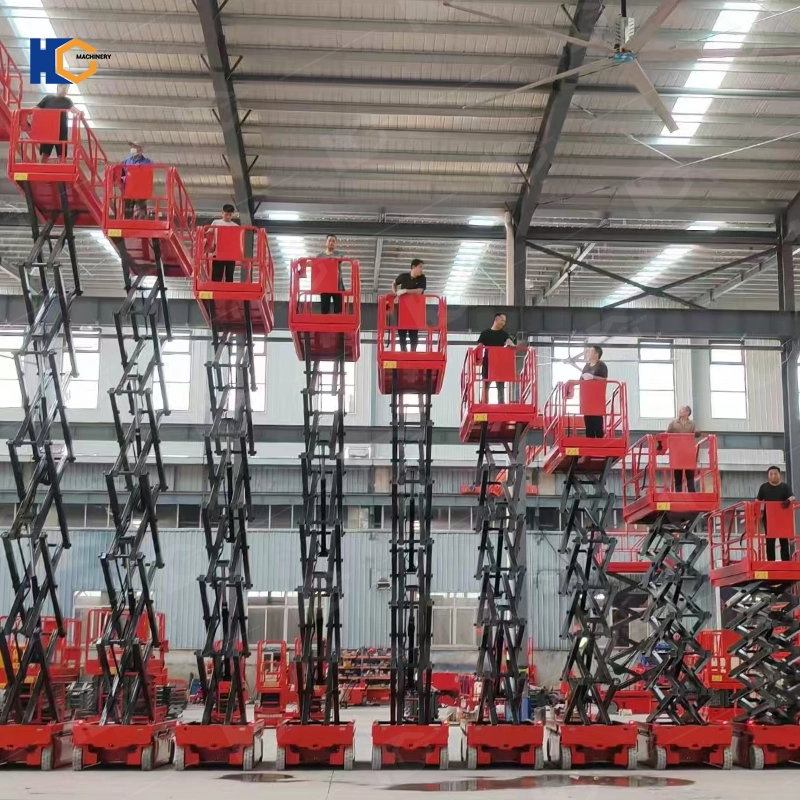Hydraulic Elevators: An Overview
Hydraulic elevators are a type of elevator system that utilizes hydraulic mechanisms to move the elevator car between floors. These elevators rely on a hydraulic pump, a cylinder, and a piston to achieve vertical movement. Hydraulic elevators are known for their reliability, smooth operation, and suitability for low to mid-rise buildings.

Key Components
Hydraulic Pump: Drives the hydraulic fluid into the cylinder.
Cylinder and Piston: The cylinder houses the piston, which moves up and down to lift or lower the elevator car.
Hydraulic Fluid: Typically oil, used to transfer force from the pump to the piston.
Control Valve: Regulates the flow of hydraulic fluid, controlling the movement of the elevator car.
Applications
Hydraulic elevators are widely used in various settings due to their specific advantages:
Residential Buildings: Ideal for low-rise apartments and homes with up to six stories.
Commercial Buildings: Common in office buildings, shopping centers, and hotels with moderate floor counts.
Industrial Settings: Used in warehouses and factories for transporting goods between floors.
Hospitals and Medical Facilities: Suitable for transporting patients and medical equipment smoothly and quietly.
Advantages
Cost-Effective: Generally less expensive to install and maintain than traction elevators.
Smooth and Quiet Operation: Provides a comfortable ride, which is crucial in residential and medical settings.
Space Efficiency: Requires less overhead space compared to other types of elevators.
High Load Capacity: Capable of lifting heavy loads, making them suitable for industrial applications.
Hydraulic elevators are a reliable and efficient solution for low to mid-rise buildings, offering smooth operation, cost-effectiveness, and versatility. Their ability to handle heavy loads and provide a comfortable ride makes them an excellent choice for residential, commercial, and industrial applications.
So how do Hydraulic Elevators work? In our manufacturing and design philosophy, Hydraulic Elevators are safety first and functionality second. This is the design philosophy of our JNHC lift factory. Many consumers may not know the working principle of Hydraulic Elevators. Let's learn more about it.
How Hydraulic Elevators Work?
Hydraulic elevators use a hydraulic system to lift and lower the elevator car. This system involves the use of a piston (or cylinder) mechanism powered by hydraulic fluid. Here’s a detailed look at how hydraulic elevators operate:
Components of a Hydraulic Elevator
Hydraulic Pump:
An electric motor powers the hydraulic pump, which forces hydraulic fluid from a reservoir into the cylinder.
Hydraulic Fluid:
Typically, oil is used as the hydraulic fluid. This fluid is non-compressible and transfers force effectively.
Piston (Cylinder):
The hydraulic fluid enters the cylinder, pushing the piston upward. The piston is directly connected to the elevator car, lifting it as the piston moves.
Control Valve:
Regulates the flow of hydraulic fluid into and out of the cylinder. The valve controls the car's movement by allowing fluid to enter the cylinder or return to the reservoir.
Reservoir (Tank):
Stores the hydraulic fluid when it is not in use. The reservoir is typically located in the machine room, along with the pump and control valve.
Elevator Car:
The platform or cabin where passengers or goods are carried. It is directly attached to the piston.
Guide Rails:
The elevator car moves along guide rails to ensure smooth and controlled vertical movement.
Operation Process
Raising the Elevator Car:
Starting the Pump: When a passenger selects a floor, the elevator control system activates the hydraulic pump.
Pumping Fluid: The pump forces hydraulic fluid from the reservoir into the cylinder.
Piston Movement: As hydraulic fluid fills the cylinder, it pushes the piston upward. The piston’s upward movement lifts the elevator car.
Reaching the Desired Floor: When the car reaches the selected floor, the pump stops, and the control valve closes to prevent fluid from returning to the reservoir, holding the car in place.
Lowering the Elevator Car:
Releasing Fluid: To lower the car, the control system opens the control valve, allowing hydraulic fluid to flow back into the reservoir from the cylinder.
Gravity-Assisted Descent: Gravity pulls the car down as the fluid exits the cylinder, lowering the piston.
Controlled Descent: The rate of fluid return is regulated to ensure a smooth and controlled descent.
Stopping: The car stops at the desired floor when the valve closes, holding the car in position.
Safety Features
Rupture Valve:
In the event of a hydraulic line break, the rupture valve immediately stops the flow of fluid, preventing the car from falling.
Emergency Lowering System:
During a power outage, an emergency lowering system allows the car to descend slowly to the nearest floor, ensuring passenger safety.
Manual Lowering Valve:
Allows maintenance personnel to manually lower the car in case of system failures.
Overload Protection:
Prevents the elevator from operating if the load exceeds the maximum capacity, ensuring safe operation.
Types of Hydraulic Elevators
Holed Hydraulic Elevator:
A hole is drilled into the ground to accommodate the piston, which extends as the car rises. Suitable for buildings up to six stories.
Holeless Hydraulic Elevator:
Uses telescoping pistons or multiple pistons beside the elevator shaft, eliminating the need for a deep hole. Suitable for buildings up to five stories.
Roped Hydraulic Elevator:
Combines a hydraulic piston with a rope and pulley system to extend the lift height. Suitable for buildings up to eight stories.
Advantages and Disadvantages
Advantages
Cost-Effective: Less expensive to install and maintain compared to traction elevators.
Space Efficiency: Requires less overhead space.
Smooth Operation: Provides a quiet and smooth ride.
Disadvantages
Slower Speed: Not suitable for high-rise buildings where speed is critical.
Limited Height: Typically used in buildings with fewer than eight stories.
Environmental Concerns: Potential for hydraulic fluid leaks, though modern systems use environmentally friendly fluids.
Hydraulic elevators are a reliable and efficient solution for low to mid-rise buildings. They operate using a straightforward mechanism involving a hydraulic pump, fluid, and piston to move the elevator car. With various safety features and types available, hydraulic elevators offer flexibility and cost-effectiveness for many residential and commercial applications. Understanding their operation can help in making informed decisions about elevator installations and maintenance.
In this Hydraulic Elevator working principle, the importance of safety is unquestionable. Let's take a closer look at how safety assurance works in the work of Hydraulic Elevator.
How to enhance the safety of hydraulic elevators?
Hydraulic elevators are widely used in low-rise and medium-rise buildings. In order to ensure the safety of passengers and the reliable operation of elevators, the following measures can be taken to enhance the safety of hydraulic elevators:
1. Install and maintain high-quality safety equipment
Rupture Valve:
Function: Immediately stop the flow of hydraulic oil when the hydraulic pipeline ruptures to prevent the elevator car from falling rapidly.
Enhanced safety: By installing a rupture valve, you can prevent accidental falls that occur when the hydraulic system suddenly fails.
Emergency Lowering System:
Function: Allow the elevator car to slowly descend to the nearest floor in the event of a power outage or other emergency.
Enhanced safety: Ensure that passengers can safely evacuate the elevator when the power is interrupted.
Manual Lowering Valve:
Function: In an emergency, maintenance personnel can manually operate the elevator to slowly descend.
Enhanced safety: Provide additional safety protection in emergency situations and facilitate maintenance and rescue.
Overload Protection Device:
Function: Prevent the elevator from overloading.
Enhanced safety: By monitoring the elevator load, when the maximum load capacity is exceeded, the elevator will refuse to run to ensure safety.
2. Regular inspection and maintenance
Regular inspection of the hydraulic system:
Content: Check the quality and level of the hydraulic oil, check the operating status of the oil pump and hydraulic cylinder.
Enhanced safety: Through regular inspections, potential problems can be discovered and dealt with early to prevent system failures.
Maintain and replace key components:
Content: Regularly replace hydraulic oil, replace aged or worn seals and hoses.
Enhanced safety: Ensure the reliability of each component in the system and avoid safety hazards caused by aging components.
Maintenance of elevator rails and cars:
Content: Regularly clean and lubricate the elevator rails, and check the balance and centering of the car.
Enhanced safety: Keep the rails and car in good condition to ensure smooth and safe operation of the elevator.
3. Install a modern control system
Automatic detection system:
Function: Real-time monitoring of the pressure, temperature and level of the hydraulic system, and timely detection of abnormal conditions.
Enhanced safety: Through automatic detection and alarm functions, system abnormalities can be responded to quickly to prevent accidents.
Intelligent control system:
Function: Optimize the operation logic of the elevator and improve the operation efficiency and safety of the elevator.
Enhance safety: Through intelligent control, protective measures can be taken quickly in the event of a fault to reduce the risk of accidents.
4. Strengthen passenger safety education
Posting safe use guidelines:
Content: Post passenger use guidelines inside and outside the elevator to explain the safe use of the elevator.
Enhance safety: Improve passengers' safety awareness and reduce safety accidents caused by misoperation.
Perform safety drills regularly:
Content: Organize safety drills for elevator emergencies and train passengers and staff in emergency response capabilities.
Enhance safety: Ensure that passengers and staff can respond correctly and save themselves in emergencies.
The safety of hydraulic elevators can be significantly enhanced by installing and maintaining high-quality safety equipment, regularly inspecting and maintaining hydraulic systems, adopting modern control systems, and strengthening passenger safety education. Ensuring the safe operation of the elevator can not only protect the safety of passengers, but also improve the service life and reliability of the elevator.
The above is a brief introduction to how our hydraulic elevator works. The above introduces the operating principle of hydraulic elevator and the working principle of hydraulic elevator to ensure safety. If you want to customize hydraulic elevators in large quantities, such as for home. We will provide a comprehensive solution, please contact our experts.



